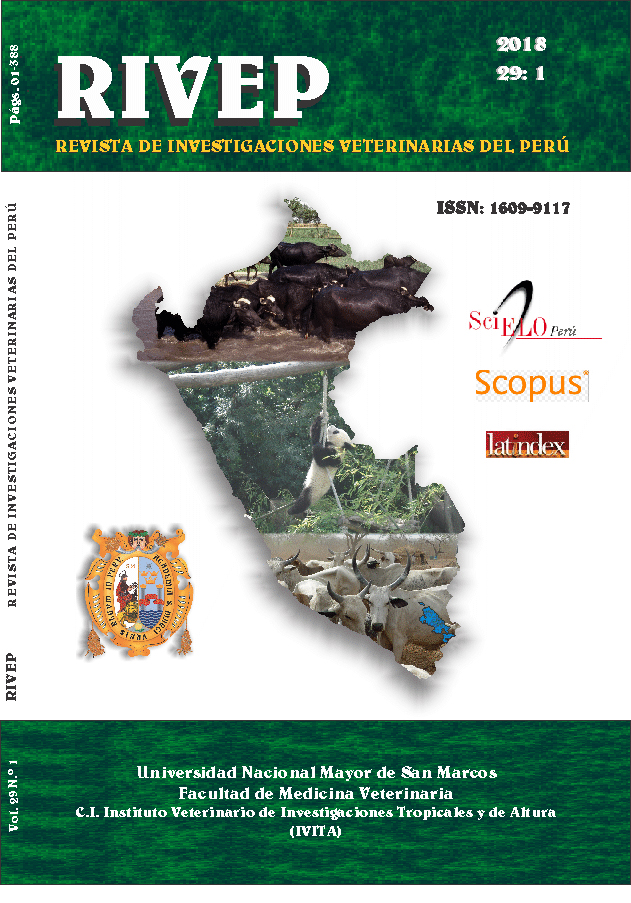Genetic variability of domestic pigeon (Columba livia) populations in Sincelejo, Sucre
DOI:
https://doi.org/10.15381/rivep.v29i1.14198Keywords:
Columba livia, plumage genes, allelic frequencies, gene flow, genetic variability, SincelejoAbstract
The aim of this research was to determine the genetic variability of domestic pigeon populations (Columba livia), using genes that encode plumage color in Sincelejo, Sucre (Colombia). The populations, distributed in twenty-four colonies, were studied between July 2016 and January 2017, and included 1402 individuals. The markers were: Plumage pattern, Primary coloration, Spread and Grizzle. The genetic parameters allele frequencies, genetic diversity and population structure were calculated through the program PopGene 1.31, genetic distance was determined by the program FSTAT v. 2.9.3.2, and the dendrogram was carried out using the program Mega 7. The allelic frequencies obtained varied from 0.2290 for the allele Checker (C), 0.1458 for the marker T-Pattern (CT), 0.1317 for the gene Grizzle (G), 0.0882 for the marker Ash-Red (BA) and 0.0282 for the allele Spread (S). The coefficient of genetic differentiation was 0.0148 and the number of migrants detected per generation was 33 individuals. The dendrogram showed three groups: one located in the central zone of Sincelejo and two groups in the periphery. The results show little genetic differentiation among the studied pigeon populations.Downloads
Downloads
Published
Issue
Section
License
Copyright (c) 2018 Enrique Pardo, Jorge Bracamontes, Mauricio Begambre

This work is licensed under a Creative Commons Attribution-NonCommercial-ShareAlike 4.0 International License.
AUTHORS RETAIN THEIR RIGHTS:
a. Authors retain their trade mark rights and patent, and also on any process or procedure described in the article.
b. Authors retain their right to share, copy, distribute, perform and publicly communicate their article (eg, to place their article in an institutional repository or publish it in a book), with an acknowledgment of its initial publication in the Revista de Investigaciones Veterinarias del Perú (RIVEP).
c. Authors retain theirs right to make a subsequent publication of their work, to use the article or any part thereof (eg a compilation of his papers, lecture notes, thesis, or a book), always indicating the source of publication (the originator of the work, journal, volume, number and date).










